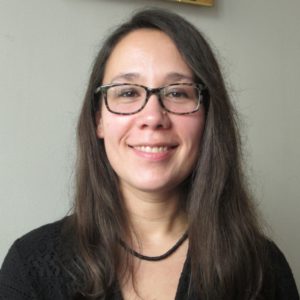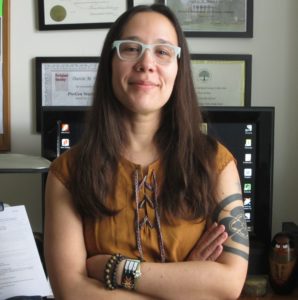Beyond the “Failed” BCG Portfolio
-
Created on 15 June 2016
An insufficient portfolio means failure only if the applicant quits. Darcie Hind Posz, CG, submitted three portfolios before becoming board-certified. Each of her submissions represented a great investment of time and money. An evaluation of “insufficient” could have left her stunned, disappointed, or angry. She didn’t quit or appeal the decision. Instead she learned from the judges’ comments and tried again. Darcie had the courage to choose the harder path—not once, but twice. She describes her journey for SpringBoard readers.
Three Portfolio Submissions, Two Failed, One Successful
By Darcie Hind Posz, CG®
I submitted my first certification portfolio prematurely. I was not ready, and my reasons for seeking certification were immature. I wanted to silence those who discriminated against me because of my youth. (I had heard, “Do you know what a census is?” one too many times.) I soon found out that my youth did not actually give me an edge. I had perused The BCG Genealogical Standards Manual, but had not studied or understood it.[1] I had only two genealogy books (on cemetery research) in my collection. I had not read any quarterly journals and had only attended a local genealogy conference. Because I did not know any better, I thought I was ready and submitted a clunky first portfolio. My kinship-determination project showcased only my ability to find direct evidence in vital records, obituaries and census records.
Darcie Hind Posz, CG
As that portfolio was traveling via postal mail to Washington, D.C., my husband and I were moving to that same city for my new job. City living is expensive. When my portfolio was deemed so far off the mark that it was returned unevaluated along with my check, I was elated just to have the money. I put certification on the back burner.
After that experience I knew I had deficiencies, so I attended lectures . . . but only those that reinforced what I already thought or knew because I did not want to feel challenged. I had subscriptions to quarterlies, but I only flipped through them. I developed a skill for over-researching to find that one piece of direct evidence that answers all questions. I did not understand indirect and negative evidence, let alone how to apply them to genealogical problems. I noticed that direct evidence only got me so far, but I ignored that feeling and went back on the clock.
Around the time that I submitted my second portfolio, I switched departments at work to a position where I reviewed lineages on an hourly basis. Comparing myself to nearly twenty other genealogists in that department, I quickly realized why I may not have been ready for certification. While these genealogists were verifying lineages, establishing proof, and resolving conflicts daily, I had only done lookups. I did not study the standards, I did not study the rubrics, and I did not read Evidence Explained.[2] I only used it as a reference for citations. After months of waiting to hear back from the BCG judges, I received notice that my portfolio had failed, but this time I had the gold mine: the judges’ comments, critiques based on the standards and the rubrics, and all the specific reasons for my failure.
I like to know boundaries, parameters, standards, routes, and rules so that I can assess how I have approached things, what did and didn’t work, and what to change the next time around. With both failed attempts at certification, I realized that I was putting about a third of my energy into it. I wanted a clear and obvious path, a “direct evidence” approach, as if certification could be achieved by pursuing this education or reading/studying that quarterly. Trying to copy what made other people successful prevented me from figuring out what worked for me. I was applying that approach to my career as well as my genealogical research. I needed to learn about indirect and negative evidence and standards so that I could apply them to my genealogical life.
After learning that my second portfolio had failed, I allowed myself to wallow in self-pity for two hours. I realized that it was important to get the proper education and to understand and apply the standards, so I started to weigh my education options. I signed up for a ProGen Study Group and the NGSQ Study Group.[3] I purchased the National Genealogical Society Home Study Course (currently American Genealogical Studies). I began attending lectures that I did not understand, that were over my head and made me feel uncomfortable. I read NGSQ during my lunch breaks. I made my own audio recordings of the BCG standards and the first two chapters of Evidence Explained and listened to them while walking or working. The standards became second nature, and I began to see them simply as best practices genealogists apply to their work, but with a number assigned to them.
My turning points were a workshop Tom Jones presented to my local chapter of the Association for Professional Genealogists; the Salt Lake Institute of Genealogy (SLIG) Advanced Evidence Practicum; and the Institute of Genealogy and Historical Research (IGHR) Advanced Methodology and Evidence Analysis course by Elizabeth Shown Mills. I have known for years that classroom settings are a weak spot for me, so I had avoided institutes. The workshop presented the materials ahead of time, so I was able to work towards the answer in a controlled environment. It was gratifying to arrive at the correct conclusions by meeting the challenge to understand and apply the Genealogical Proof Standard. The SLIG Advanced Evidence Practicum hit on the same weak spot, and although I was uncomfortable the entire week, I was able to take the work home, take it apart and learn how it was put together in the first place. The Advanced Methodology course reinforced that I do not work well in classrooms, but I still learned on a deeper level. All of these courses provided binders that I consult to this day.
By varying educational formats I was able to focus on learning every day rather than waiting for an institute. I ordered audiotapes of genealogy lectures that were advanced and theory driven, and I listened to them daily. Beefing up my education became a priority. What I learned I put into practice in my day job. I worked at it on lunch breaks, evenings, and weekends. I had the rubrics on a bulletin board in front of me when I researched so I automatically checked to see if my work met the standards. The magical day when I realized I finally got analysis and correlation, I knew I was ready to go back on the clock again.
Once I was outside of my comfort zone and no longer insulated, I was able to figure out how I learn. Smart learning is a priority for me. It lasts longer than a course. Knowing how I process and retain information underlies how I research, how I analyze and correlate data, and how I write. Learning that was as important as certification. I knew I wanted to apply again one more time before I was thirty-five years old. Finally ready and with education under my belt, four months before my thirty-fifth birthday I became a board-certified genealogist.
[1] Board for Certification of Genealogists, The BCG Genealogical Standards Manual (Orem, Utah: Ancestry Publishing, an imprint of MyFamily.com, 2000). This publication has been superseded by Board for Certification of Genealogists, Genealogy Standards (Nashville, Tenn.: Ancestry.com, an imprint of Turner Publishing, 2014).
[2] Elizabeth Shown Mills, Evidence Explained: Citing History Sources from Artifacts to Cyberspace, 3rd ed. (Baltimore: Genealogical Publishing Co., 2015).
[3] ProGen Study Group is based on Elizabeth Shown Mills, ed., Professional Genealogy: A Manual for Researchers, Writers, Editors, Lecturers, and Librarians (Baltimore: Genealogical Publishing Co., 2001). NGSQ Study Group discusses articles from the National Genealogical Society Quarterly. Follow the links above for more information on each.
The words Certified Genealogist are a registered certification mark, and the designations CG, CGL, and Certified Genealogical Lecturer are service marks of the Board for Certification of Genealogists®, used under license by board certificants after periodic evaluation.
